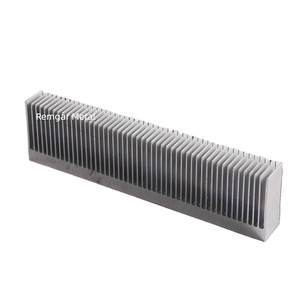
Chinese Supplier Wholesale Custom 300W 125*55*155mm CPU Aluminum Copper Folded Fin Heat Sink Heatsink


Large 500mm Aluminum Cooper Liquid Cooling Heatsink For Custom Copper Tube Water Cold Plate Heat Sink On Lithium Battery



















A 400mm heatsink is an essential component in thermal management systems, designed to dissipate heat from high-temperature devices. This category encompasses a variety of heatsinks, each tailored to specific applications and thermal requirements. The effectiveness of a 400mm heatsink is critical in maintaining the performance and longevity of electronic devices by ensuring optimal operating temperatures.
The construction of a 400mm heatsink often involves materials with high thermal conductivity, such as copper or aluminum alloys. These materials are chosen for their ability to rapidly transfer thermal energy from the source to a larger surface area where it can be dissipated more efficiently into the surrounding environment. The choice of material impacts the heatsink's performance, weight, and suitability for various devices.
The design of a 400mm heatsink includes features such as fins or pipes that increase the surface area, enhancing the heat dissipation process. The configuration of these elements is engineered to balance airflow and thermal resistance, ensuring that the device remains within safe operating temperatures under different conditions. The physical shape, whether it is a flat, round, or other form, is determined by the specific heat dissipation needs of the application.
Heatsinks of this size are commonly employed in sectors where efficient cooling is paramount. This includes computer systems, where a 400mm heatsink may be used for CPU cooling, or in other electronics like SSDs, RAM, and motherboards. Beyond computing, these heatsinks serve in refrigeration, air conditioning units, and even in industrial machinery that requires effective thermal regulation.
Choosing the right 400mm heatsink involves considering the thermal load, compatibility with the device, and the environment in which it will operate. The heatsink must match the physical dimensions and mounting mechanism of the component it is intended to cool. Additionally, the material and design must align with the thermal performance requirements of the application.
Effective heat management with a 400mm heatsink not only preserves the integrity of electronic components but also contributes to energy efficiency. By maintaining components at their ideal operating temperatures, heatsinks help in reducing the risk of overheating and potential system failures, thereby extending the lifespan of the devices.